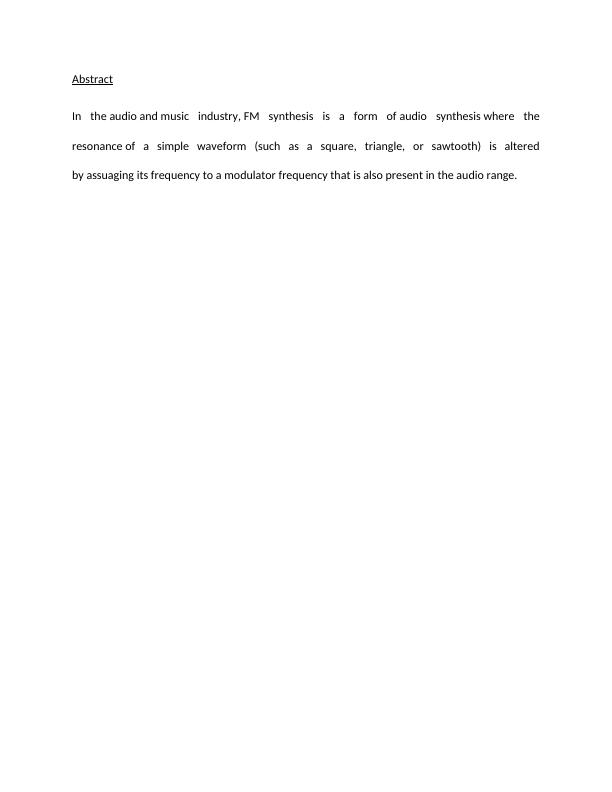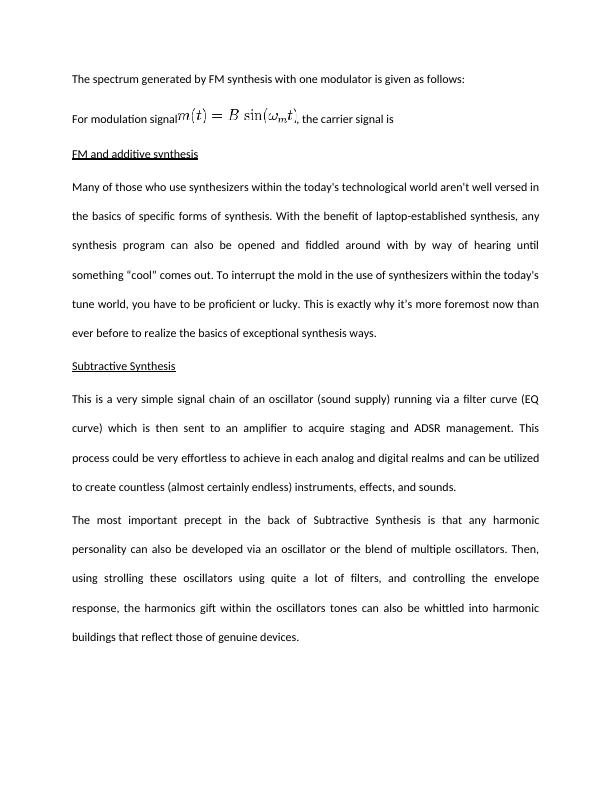Frequency Modulation: An Overview of FM Synthesis in Audio and Music Industry
15 Pages2789 Words209 Views
Added on 2023-04-21
About This Document
This article provides an overview of frequency modulation (FM) synthesis in the audio and music industry. It explains how FM synthesis alters the resonance of simple waveforms by assuaging their frequency to a modulator frequency. The article discusses the basics of different synthesis techniques such as subtractive synthesis, additive synthesis, physical modeling synthesis, wavetable synthesis, vector synthesis, LA synthesis, and segment distortion synthesis. It also explores the applications of FM synthesis in creating unique sounds and instruments.
Frequency Modulation: An Overview of FM Synthesis in Audio and Music Industry
Added on 2023-04-21
ShareRelated Documents
End of preview
Want to access all the pages? Upload your documents or become a member.
Frequency Modulation Synthesis (FM Synthesis) | Abstract
|14
|2737
|273




